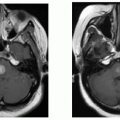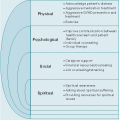BACKGROUND
According to the American Academy of Hospice and Palliative Medicine, the goal of palliative care is “…to prevent and relieve suffering, and to support the best possible quality of life for patients and their families, regardless of their stage of disease or the need for other therapies, in accordance with their values and preferences” (
1). Given the centrality of the concept of quality of life (QoL) to palliative and supportive oncology, assessment of QoL is essential, both as part of routine clinical practice and for research purposes (
2). Practical uses of routine measurement of QoL include identifying and prioritizing problems, facilitating communication, screening for unidentified problems, encouraging shared decision making, and monitoring change and effectiveness of treatment (
3). The last point in this list is particularly important because without tools to systematically assess QoL and evaluate the effectiveness of standard practices or novel interventions, the extent to which the ultimate goals of palliative medicine are realized (i.e., the prevention and relief of suffering) cannot be honestly assessed.
While there is broad consensus about the importance of routine measurement of QoL in palliative medicine (
4), there is little consensus about how this is best achieved (
5,
6), though the recommendations are consistent that patients themselves, without interpretation by third parties, are the best source of information regarding QoL. Such reports taken directly from patients, without other censoring, are referred to as
patient-reported outcomes (PROs) and form the basis for QoL measurement. There are numerous other types of PROs, especially symptoms, such as pain, nausea, breathlessness, and anxiety, which are often related to QoL, pertinent to palliative and supportive oncology, and best collected via PRO assessment instruments as well. This chapter will broadly discuss terminology in QoL research, the statistical basis, relevant available instruments for palliative medicine, and a framework for selecting among the available instruments.
TERMINOLOGY
In order to understand the basis for disagreement about best practices for measuring QoL, it is prudent to examine currently used definitions for the numerous terms. A thorough, but by no means comprehensive, list of relevant terms and definitions is included for quick reference (
Table 68.1). QoL, as defined by the World Health Organization (WHO) Quality of Life Group, is an individual’s “ …perception of their position in life in the context of the culture and value systems in which they live and in relation to their goals, expectations, standards and concerns. It is a broad ranging concept affected in a complex way by the person’s physical health, psychological state, level of independence, social relationships, personal beliefs and their relationship to salient features of their environment” (
13). Despite this definition, research in QoL measurement is complicated (
11), with multiple authors having acknowledged that there is still a lack of agreement on the exact definition (
5,
14,
15), and that imprecision and inconsistency persist (
11). In fact, the term
QoL sometimes is used to refer to the general construct related to overall satisfaction with all aspects of an individual’s life, while at other times it is used more specifically to reflect those experiences impacted by disease or its treatment (
14). There are a number of terms—
functional status, health status, QoL, and
health-related quality of life (HRQoL)—that have been used interchangeably in the literature because they overlap to some degree with respect to definition, but in fact, differ in important ways (
11). Further discussion on QoL measurement depends upon clarification, to the extent possible, of these terms.
Functional status generally refers to the ability to physically perform tasks related to daily living, such as household activities, personal care, and eating (
11), although, in some contexts, the term reflects the ability to perform in expected social roles. Functional status is traditionally assessed by clinicians (e.g., the Karnofsky Performance Status Scale (
16), Eastern Cooperative Oncology Group Performance Status Scale (
17), and Palliative Performance Scale (
18)).
Health status is a multidimensional concept that is broader than functional status, typically representing an individual’s perception about overall state of health, both physical and mental (
11). Again, the term can be used for even more general concepts, such as how the perception of the overall state of health influences social roles and spirituality (
14).
By definition, QoL is a very subjective concept, yet one that almost everyone can intuitively understand. It also has intuitive meaning to most people, but the meaning undoubtedly varies between individuals. It is this variability that complicates QoL research, as consistent implementation of a single, agreed-upon definition (even though one has been put forward by the WHO) across the spectrum of QoL research is impractical.
Because the term
QoL extends beyond the scope of health (mental and physical) to include the influence of
social, political, economic, and environmental factors on an individual’s experience, recent literature within the context of QoL research in medicine has focused on the concept of HRQoL. HRQoL is defined as “…the subjective assessment of the impact of disease and treatment across the physical, psychological, social and somatic domains of functioning and well-being” (
11). HRQoL is intended to differentiate between the effects of factors intrinsic to the individual from those related to societal factors, such as political and societal norms (
14). With respect to measuring HRQoL, there is some disagreement about which domains, among physical, psychological, and social, are necessary for inclusion. There is agreement, however, that a comprehensive approach to measurement of HRQoL is necessary because of the multidimensional nature of the concept (
11).
Acknowledging the preference for the term HRQoL in recent literature, and cogent arguments surrounding its use, we prefer QoL in the setting of palliative and supportive oncology, as attempting to compartmentalize HRQoL from QoL is exceedingly difficult and practically trivial in this setting. In the setting of life-threatening illness, healthrelated aspects touch nearly every aspect of life and are often all encompassing. Thus, further discussions will consistently utilize the term QoL, rather than HRQoL. Additionally, because PROs serve as the foundation for QoL measurement, the terms PRO and QoL instruments are used interchangeably, with PRO instruments reflecting a more general term that may or may not be specifically designed to measure QoL but rather may be specific to other PRO constructs such as symptom assessment.








